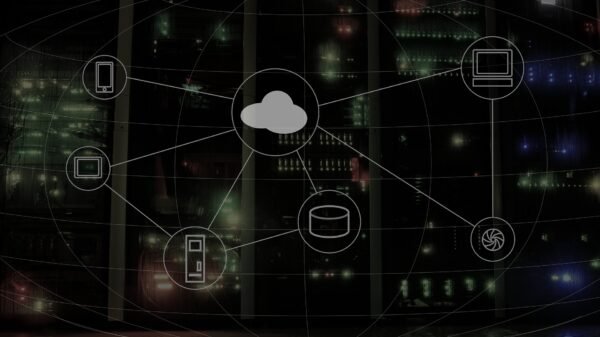Edge Computing future of Cloud Computing
We are surrounded by social media platforms, online material, and other online services that provide us with accessibility to data from a place at any time in the era of cloud computing, which was the forerunner of edge computing. The emphasis will shift to “edge computing,” which is, in many respects, the anti-cloud, with next-generation applications focusing on machine-to-machine interaction with ideas like internet of things (IoT), machine learning, and artificial intelligence (AI).
With edge computing, we can compute, evaluate, and make choices in real time much closer to the customer’s location at the network edge. Coming closer to the network edge, or within miles of the customer’s premises, aims to improve network performance, increase service dependability, and lower the cost of transporting data computation to far-off servers, hence reducing bandwidth and latency difficulties.
Edge computing: Why It’s Important
Over the past two decades, the wireless industry’s expansion and the adoption of new technologies have sped up the transition from data centres located on premises to cloud servers. However, with the expansion of Industrial Internet of Things (IIoT) software and devices, using cloud or data centre servers for computing may not be the most effective strategy. The amount of bandwidth needed by cloud computing to transfer data from the client’s premises to the internet and back increases delay. Computing power must be located at the edge, which is nearer the source of data production, due to the strict latency demands of IIoT applications and devices.
Edge Computing: What Is It?
The geographical distribution of the network’s resources is specifically mentioned in relation to the phrase “edge”. By using edge computation, it is possible to process data near to the data source rather than sending it across several hops and depending on the network of cloud services to process it and send the results back. Does this imply that the cloud network is no longer necessary? No, however it does imply that the cloud is now nearer the source of the data rather than crossing across it.
Edge computing is the process of detecting, gathering, and evaluating data at the location where it is generated, rather than always in a consolidated computing environment like a data centre. Edge computing transmits data in immediate form or later to a centralised data repository using digital devices, which are often positioned at various locations. Utilising dispersed infrastructures as a shared resource is known as edge computing.
A new technology called edge computing will be crucial in advancing data computation’s frontier to a network’s logical limits.
Cutting-edge computing is primarily fueled by falling computer component costs.
IIoT devices’ intelligent and smart computing capabilities
IIoT device proliferation and increasing data need Technological advances in machine learning, artificial intelligence, and analytics
Thanks to a dramatic change in the network architectural environment brought about by the miniaturisation of processing and storage technologies, businesses may now rest a little about data security.
IoT devices are now far faster than they were in the past in acquiring, storing, and interpreting massive amounts of data. This provides businesses with greater justification to modernise and integrate their networks in order to shift processing operations nearer to the data collected at the network edge and assess and use it in real time closer to the intended users.
Due to the fact that an IoT device does not have to continually loop back to the central server in order to learn what task has to be accomplished, edge computing networks are crucial for lowering latency and increasing performance. This method of managing data is quick and flexible, which shows that organisations are about to experience data storage and analysis with a new level of simplicity.
Edge computing: The Cloud’s Future Modern technological advancements like 5G, Digital Twin, and platforms for the creation of cloud-native applications, databases, and integrations make edge computing crucial right now.
Key edge enablers for 5G are its speed and low latency.
By 2025, 1.2 billion 5G connections will be accessible to 34% of the global population. Highly reliable low-latency is the new currency of networking, providing new possibilities in a number of previously unachievable industries. The reduced latency of 5G and the expansion of edge computing will enable an entirely new set of applications, revolutionising the boundaries of what is practical.
The Private 5G Network will also encourage Edge computing and push companies toward the Edge. Forrester considers a network dedicated to a certain business or place, such a factory, shipyard, or warehouse, to have immediate value.
Response necessary very immediately
Reaction time and response speed are essential requirements if the AI/ML-powered solution is used at a remote location or while the user is travelling. Even a minute delay in the algorithms of a hospital’s remote patient monitoring system might cost someone their life. Data-driven service providers can’t afford to be delayed since doing so might drastically degrade their brand’s reputation and the standard of the customer experience. As more and more data is produced and sent, data traffic congestion is imminent. By reducing latency, edge computing enables increased network performance. Since IoT edge computing devices process data locally at edge data centres, information does not need to travel as far as it would in a cloud computing environment.
Container technologies like Docker and Kubernetes enable container organisations to run prefabricated software containers more quickly, reliably, and efficiently. Businesses may set up and grow Micro Clouds anywhere they see fit thanks to these technologies.
Service and Data Interaction
Providing a method for releasing and requesting data or services that are scattered over the Edge using datastores and containers, Service and Data Mesh is a critical enabler. Additionally, it facilitates bulk queries for the whole Edge population across all devices, which is helpful.
Software-defined networking, or SDN
Software-defined networking makes it simpler to customise routing and bandwidth when determining how to connect edge devices and the Cloud by enabling users to construct overlay networks.
Electronic Twin
The digital twin, which enables domain experts—not just software engineers—to configure their applications to observe, assess, and respond to the Edge, enables the physical-to-digital and cloud-to-edge organisation.
IIoT adoption and cloud maturity for OT and IT integration via edge computing
The growth of IIoT systems and Edge AI makes IT-OT convergence possible, offering the business an advantage in innovation.
Industry Growth for IoT Sensors
The Internet of things in the Industrial of Things, or IIoT, sensors offers more significant business advantages, such as higher production and efficiency and lower costs for data collection, analysis, and exchange.
Multi-Access Edge Computing (MEC) MES transforms the structure and architecture of mobile networks. from a solely voice and data transmission network to a platform for application-based services. The MEC completes and enables the service ecosystem that will characterise 5G. Industry 4.0, eHealth, remote patient monitoring, and connected cars are a few examples.
Extended Reality (XR)
An immersive user interface is what XR refers to in a virtualized environment. With the help of edge computing, these interactions become even more detailed and dynamic.
the use of neuromorphic processors and other hardware
Due to advancements in various hardware and ruggedized HCI/Edge devices that process more data more rapidly while using less energy, edge computing is becoming increasingly popular. This particular device may be used on Edge to compute efficiently in practical scenarios while accelerating response times.
Hyperscalers, 5G, and chip OEMs are creating swiftly in order to dominate the industry. Azure Percept, Microsoft’s most recent edge computing platform, offers the best cloud services, equipment, and software to the edge. With Azure Percept, a wonderful tool powered by Azure Cognitive Services and Azure Machine Learning Services, makers and builders can design and prototype intelligent IoT solutions.
Neuromorphic processors and sensors will close a critical gap in the strategy by offering continuous onboard learning and real-time intelligence at the network edge while operating on a limited energy budget. With the help of neuromorphic computer architectures, which were inspired by the brain, increasingly sophisticated AI may be supplied at the Edge. Neuromorphic architecture systems
- Enable devices to respond to context-specific changes.
- Are far more energy-efficient than general-purpose computer architectures from the past.
- By analysing streams of data that are continually changing and placing neuromorphic processors at the edge, Excel reduces the amount of time it takes to do analysis.
- Have improved the bulk of conventional AI systems’ capabilities by enabling speedy learning from tiny data.
Privacy-preserving technology
New privacy-focused technologies and processing techniques that conceal some of the problematic qualities enable the processing of data. Data is encrypted during transmission and storage. But when processing on the edge is required, privacy-preserving technology is required to safeguard data even throughout the computing stage, enhancing its dependability for other corporate divisions and partners.
Robotics
Robotics may be programmed to react to information and signals coming from the edge. This has been seen in essential surgical procedures that need speed and precision. The Edge and Cloud are both essential for managing the robot’s motions and executions utilising stored data to guarantee that there is no lag between movements.
Edge computing advantages
The most crucial aspects of edge computing are computation speed and real-time delivery, which enable data processing at the network’s edge. Edge computing has advantages in the following fields:
Latency
Latency is decreased by moving data computation to the edge. Without edge computing, latency varies based on available bandwidth and site location when data needs to be calculated at a server situated distant from the client premises. With edge computing, data may be processed locally instead of being sent across a network to a far-off server or cloud, which is perfect for applications where latency of a few milliseconds can be problematic. Data processing is sped up when done at the network edge because less communications must be sent back and forth between edge devices and distant servers.
Bandwidth
Instead of sending data to the cloud computing for processing, processing is pushed to edge devices, which reduces the requirement for high bandwidth while lengthening reaction times. Since bandwidth is a crucial and limited resource, increasing bandwidth needs can aid with improved spectrum usage by reducing network loading.
Security
From a particular angle, edge computing offers superior security since data stays near to the edge equipment where it is created and does not travel over a network. The vulnerability decreases when less data is processed at distant servers or in cloud settings. Another argument for why edge computing is less safe is that the edge devices themselves may be weak points, placing the burden of providing strong security on the edge devices on the operators.
Multi-Access Edge Computing (MEC): What Is It?
MEC provides ultra-low latency cloud computing at the cellular network’s edge. It enables processing data traffic and operating apps closer to the mobile phone user, decreasing latency and congestion on the network. Real-time analysis for giving time-sensitive responses is made possible by computing data nearer to the edge of the cellular network, which is crucial across a number of industries, including healthcare, telecommunications, finance, and so on. The 5G evolution includes implementing distributed architectures and bringing user plane traffic nearer to the edge by supporting MEC use cases.
Standardisation of Edge Computing
The open source and standards ecosystem is continuously investigating solutions to guarantee compatibility and seamless integration of edge computing components.
How Can Operators Benefit from Edge Computing?
Bringing dynamic, real-time, and quick data processing to edge devices
lowering costs by using fewer cloud computing servers
Low-latency spectral efficiency
Delivering traffic more quickly while improving user experience (QoE)
Conclusion
Due to the numerous advantages of edge computing in terms of latency, bandwidth, and security, IIoT applications and devices have increased rapidly. Edge computing may benefit any applications that could gain from latency reduction and effective network use by reducing the computational burden on the network to transmit the data back and forth, even if it is best for IIoT.
Organisations are now able to leverage quicker and more precise data computation at the edge thanks to evolving wireless technologies. By facilitating quicker decision-making and reducing expenses without requiring for data to pass through the cloud network, edge computing helps wireless carriers. Wireless operators may immediately deploy processing and storage resources at the network’s edge thanks to edge computation. Wireless operators face difficulties to keep the current status quo when operating 4G along with 5G upgrades like edge computing, NFV, and SDN as 5G develops and we move toward a linked environment. Since edge computing is currently in its early stages, its success cannot be anticipated, but in the future, its advantages might give wireless carriers a significant competitive advantage.
Everything in contemporary society is “smart” and “intelligent” thanks to technology. Artificial intelligence (AI) is used in significant goods and services to grasp orders, analyse data, identify patterns, and make decisions on behalf of humans. Everything from automobiles and home appliances to business equipment uses this technology. The majority of today’s intelligent products are driven by remote processing that occurs in data centres or the Cloud, where there is enough computing power to run the required algorithms.
As edge computing develops, it will open the door for a number of fresh and advantageous applications, services, and use cases.
With the help of edge AI, these situations may now be further improved, providing companies new insights on established business practices and empowering them to create impactful ideas that will transform their sector. Therefore, edge AI may help companies obtain a novel and sustainable competitive advantage—let’s call it a competitive edge.
Because of 5G’s enhanced bandwidth and Distributed Cloud’s low-latency computation, the edge is the future that was imagined less than 10 years ago and is now more available to us than ever. This technology is amazing since it has made a number of developments that go far beyond anything we could have ever thought of. When science fiction becomes reality, edge computing is like that, except it’s more wide and has more potential. Utilising the Edge will not only put your business in a position for a new period of success, but it will also provide you the ability to run your business more skillfully, come up with more remarkable ideas faster, and get more out of your affiliations.
































































Comment Template